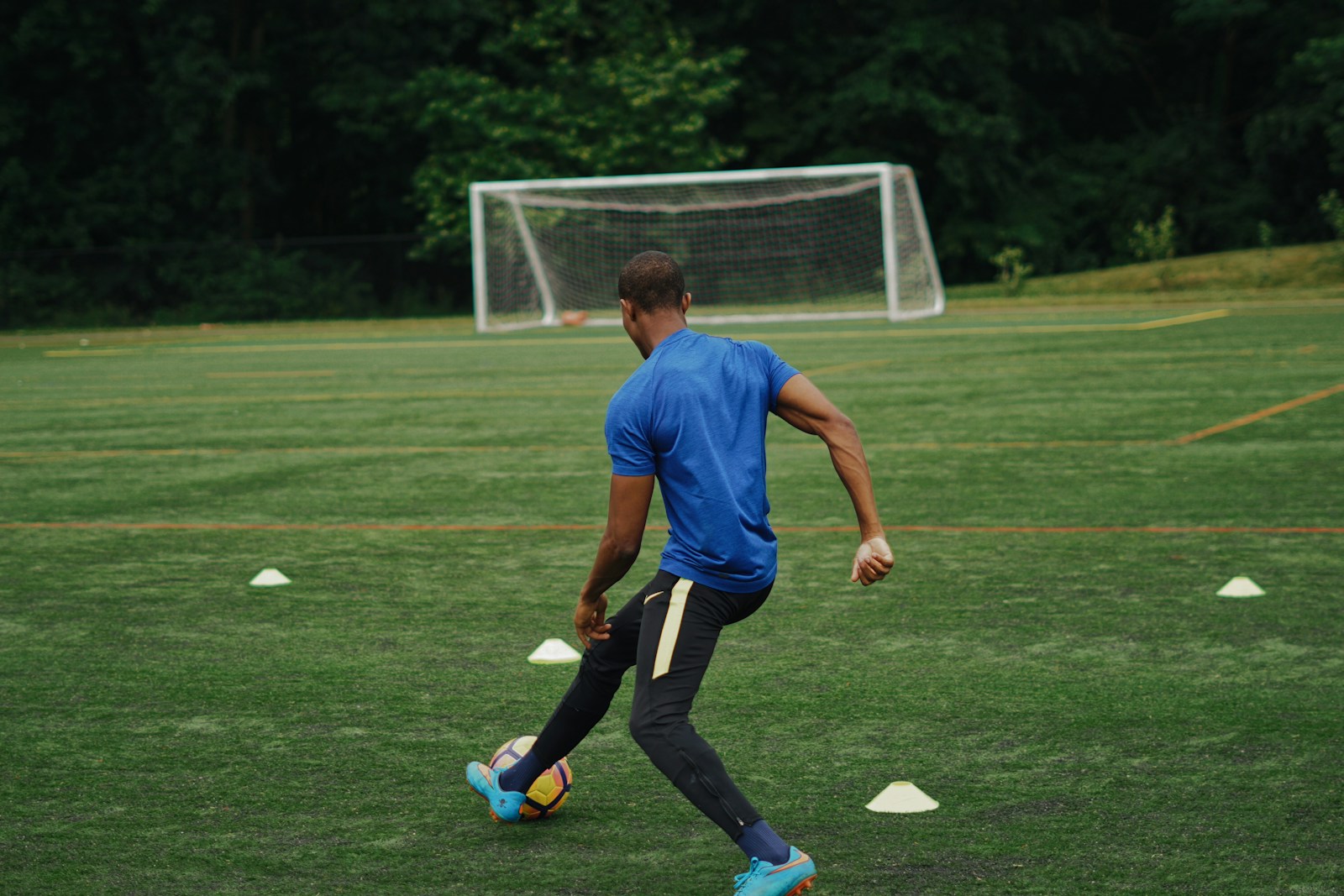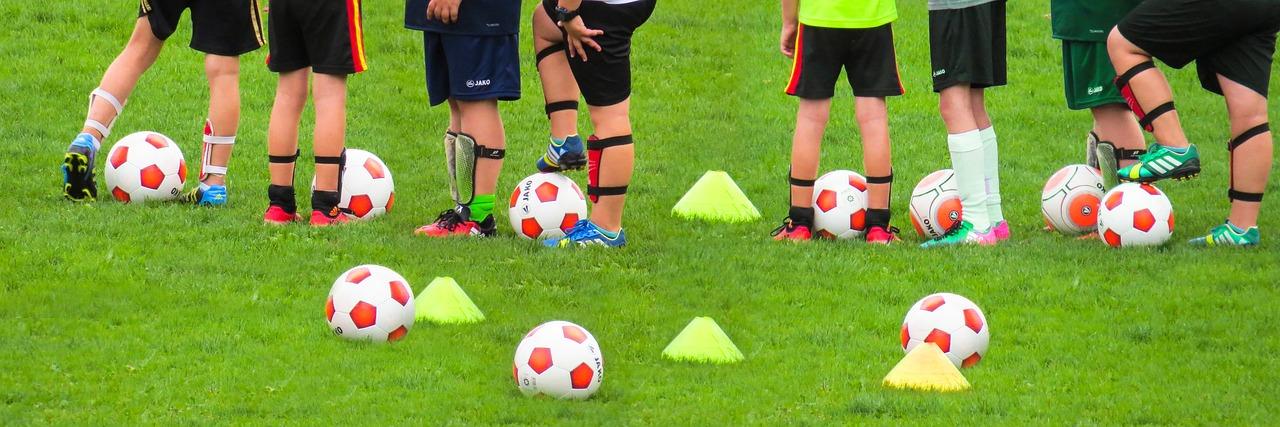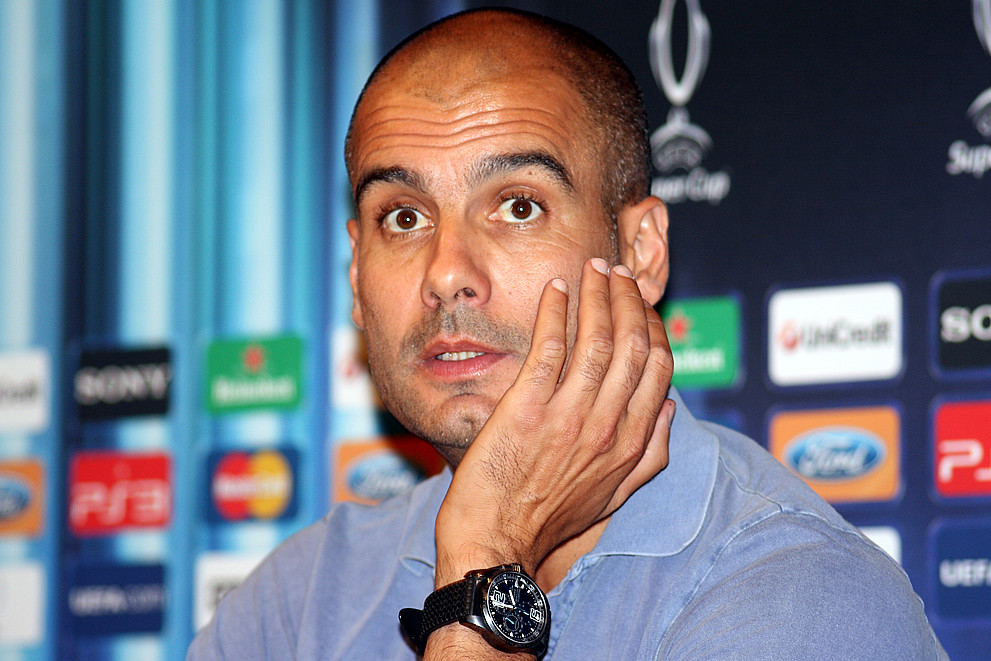Eleven (11) Best Soccer Formations That Win Soccer Matches
Eleven (11) Best Soccer Formations That Win Soccer Matches
Introduction
Choosing the right soccer formations is crucial for a soccer team’s success on the field. A well-structured formation in soccer can maximize player strengths, optimize team coordination, and create scoring opportunities.
In this article, we will explore eleven of the best soccer formations that have proven to be effective in winning matches. We will provide some images or diagrams to help you see the real picture. Let’s dive in!

1. The 4-3-3 Formation in Soccer
Description
The 4-3-3 formation (see 1 above) in soccer consists of four defenders, three midfielders, and three forwards. It is an attacking formation that focuses on maintaining possession, creating width, and providing attacking options.
Advantages
- Provides a strong attacking presence with three forwards
- Offers versatility in midfield with three players capable of both defensive and offensive duties
- Creates width on the field, allowing for effective wing play
Disadvantages
- Can leave the defence vulnerable if the midfielders do not track back
- Requires disciplined positioning and communication among players
2. The 4-4-2 Formation
Description
The 4-4-2 soccer formation consists of four defenders, four midfielders, and two forwards. It is a balanced formation that focuses on both attacking and defensive stability.
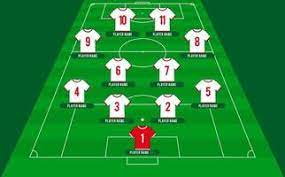
Advantages
- Provides a solid defensive structure with two banks of four players
- Offers support to the forwards with a midfield diamond
- Allows for quick transitions from defence to attack
Disadvantages
- Can be outnumbered in midfield against formations with three central midfielders
- Requires effective communication and coordination between the midfielders and forwards
3. The 3-5-2 Soccer Formation
Description
The 3-5-2 formation consists of three defenders, five midfielders, and two forwards. It is an attacking formation that emphasizes midfield control and flexibility.
Advantages
- Provides numerical superiority in midfield
- Allows for quick combination play between midfielders and forwards
- Offers flexibility in transition from defence to attack
Disadvantages
- Requires highly skilled and disciplined wing-backs to provide width
- Can leave the defence exposed if the wing-backs do not track back
4. The 4-2-3-1 Formation
The 4-2-3-1 soccer formation consists of four defenders, two defensive midfielders, three attacking midfielders, and one forward. It is a balanced formation that focuses on controlling the midfield and creating scoring opportunities.
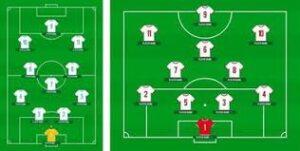
Advantages
- Provides a strong defensive shield with two defensive midfielders
- Offers creativity and attacking options with three attacking midfielders
- Allows for quick transitions from defence to attack
Disadvantages
- Can leave the lone forward isolated if the attacking midfielders do not support effectively
- Requires disciplined positioning and communication among players
5. The 3-4-3 Soccer Formation
Description
The 3-4-3 soccer formation consists of three defenders, four midfielders, and three forwards. It is an attacking formation that focuses on high-intensity pressing and quick attacking transitions.
Advantages
- Provides an overload in midfield with four players
- Offers flexibility in attacking combinations with three forwards
- Allows for high-intensity pressing and quick counter-attacks
Disadvantages
- Can leave the defence exposed if the midfielders do not track back
- Requires disciplined positioning and communication among players
6. The 4-1-4-1 Formation
Description
The 4-1-4-1 soccer formations consists of four defenders, one defensive midfielder, four midfielders, and one forward. It is a defensive soccer formation that focuses on maintaining a solid defensive structure and counter-attacking.
Advantages
- Provides a strong defensive shield with a dedicated defensive midfielder
- Allows for quick counter-attacks with support from the midfielders
- Offers stability and compactness in defence
Disadvantages
- Can be outnumbered in midfield against formations with three central midfielders
- Requires effective communication and coordination between the defensive midfielder and the backline
7. The 4-3-2-1 Formation in Soccer
The 4-3-2-1 formation, also known as the “Christmas Tree” formation, is a tactical setup commonly used in soccer.
It consists of four defenders, three central midfielders, two attacking midfielders, and one lone striker. This soccer formation provides a balanced approach to both defense and attack.
Here are the advantages and disadvantages of the 4-3-2-1 soccer formation:
Advantages
- Strong defensive presence: With four defenders at the back, the team has a solid defensive structure. This allows for better coverage and protection against opposing attacks.
- Compact midfield: The three central midfielders provide stability and control in the middle of the pitch. They can dictate the tempo of the game, win back possession, and distribute the ball effectively.
- Creative attacking midfielders: The two attacking midfielders, also known as the “number 10s,” have the freedom to roam and create scoring opportunities. They can provide key passes, support the lone striker, and contribute to the team’s attacking play.
- Versatility in attack: The lone striker up front can benefit from the support of the attacking midfielders, who can provide through balls, crosses, and combination play. This allows for a varied and dynamic attacking approach.
Disadvantages:
- Lack of width: The soccer formation’s focus on a compact midfield can result in limited width in the team’s attacking play. This makes it more challenging to create opportunities from wide areas and rely heavily on central play.
- Vulnerability to counterattacks: With only three central midfielders, the team may face difficulties in quickly transitioning from attack to defense, leaving gaps in the midfield. This can expose the defense to counterattacks from the opponent.
- Overreliance on attacking midfielders: The success of the soccer formation heavily depends on the performance and effectiveness of the attacking midfielders. If they are unable to create or finish chances, the team’s attacking prowess may suffer.
- Need for disciplined positioning: The players must maintain their positions and coordinate effectively to avoid overcrowding in certain areas of the pitch. Discipline and understanding of positional responsibilities are crucial for the success of this formation.
8. The 4-1-4-1 Soccer Formations:
This soccer formation is a variation of the 4-3-3 formation, but with an extra defensive midfielder. Basically, the backline has four defenders, with one holding midfielder in front of them. Similarly, the midfield has four players, with two central midfielders and two wide midfielders. And, the lone striker leads the attack, supported by the attacking midfielders.
Advantages:
- Strong defensive structure with a dedicated holding midfielder providing cover for the defence.
- Provides balance in midfield with four players, allowing for control and possession of the ball.
- The lone striker can lead the attack while being supported by the attacking midfielders.
Disadvantages:
- Limited attacking options due to having only one striker.
- The midfielders may face challenges in providing both defensive and attacking support simultaneously.
- Requires disciplined positioning and coordination among the players to maintain the desired shape.
9. 4-4-1-1 Formation:
In these soccer formations, the focus is on maintaining a compact midfield while providing support to the lone striker.
The defence consists of four defenders, with two central midfielders and two wide midfielders in front of them.
The attacking midfielder plays just behind the striker, acting as a link between the midfield and the forward line.
Advantages:
- Notably, it has a compact midfield formation, making it difficult for opponents to penetrate through the centre.
- The attacking midfielder acts as a link between the midfield and the lone striker, providing support and creating scoring opportunities.
- Allows for flexibility in transitioning between defensive and attacking play.
Disadvantages:
- Limited width in the midfield, which can make it challenging to create opportunities from wide areas.
- The lone striker may face isolation if not adequately supported by the attacking midfielder and midfielders.
- Requires good communication and understanding between the attacking midfielder and the lone striker.
10. 5-3-2 Formation:
This formation in soccer is known for its defensive solidity and compactness.
The backline consists of five defenders, with three central midfielders in front of them.
The two strikers work together to create scoring opportunities, supported by the midfielders.
Advantages:
- Offers a solid defensive structure with five defenders, making it difficult for opponents to break through.
- Provides numerical superiority in midfield with three central midfielders, allowing for control and distribution of the ball.
- The two strikers can work together to create scoring opportunities and put pressure on the opposing defence.
Disadvantages:
- Limited width in midfield, which can make it challenging to create opportunities from wide areas.
- The five defenders may restrict attacking options and make it harder to build play from the back.
- Requires strong defensive discipline and organization to prevent gaps in the defence
11. 3-4-3 Soccer Formations:
This formation focuses on attacking play, with a strong emphasis on wide play.
The backline consists of three defenders, with two central midfielders and two wide midfielders in front of them.
The front line consists of three strikers, providing multiple options for goal-scoring opportunities.
Advantages:
- Emphasizes attacking play with three strikers, who provide multiple scoring options and put pressure on the opposing defence.
- The two wide midfielders contribute to width in the attack, stretching the opponent’s defence.
- Allows for flexibility in adapting to different soccer game situations, transitioning between defence and attack quickly.
Disadvantages:
- Vulnerable to counterattacks due to having fewer defenders.
- Requires the central midfielders to provide defensive cover and support to the backline.
- Demands physical fitness and stamina from the players to cover both attacking and defensive duties effectively.
Conclusion
These are just a few examples of the best soccer formations that teams can use. But, note that soccer formations may vary depending on the team’s playing style, the strengths of the players, and the soccer tactics employed by the coach.
Essentially, soccer coaches often choose formations in soccer teams based on the specific match, opponent, and game plan they have in mind.
And, by having a variety of soccer formations at their disposal, soccer coaches can adapt their tactics and strategies to different situations throughout a season or match.
It allows them to optimize their soccer team’s performance and exploit their strengths while minimizing weaknesses.


